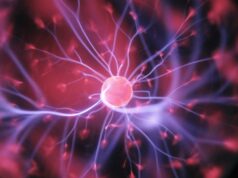
Final results evaluating the Precision Spectra spinal cord stimulator system (Boston Scientific) demonstrate that the device provides more than 70% greater low back pain relief than with the previous generation Precision Plus system.
The study showed a significant decrease in average pain scores sustained over a two-year period. Additionally, when the Precision Spectra was used with the Boston Scientific CoverEdge Surgical Lead—the world’s only 32-contact spinal cord stimulation lead—12-month data demonstrated further pain relief in patients with low back pain. The improved outcomes were achieved using the Precision Spectra proprietary Illumina 3D neural targeting algorithm that is designed to enable precise control with simple, point-and-click targeting.
The new LUMINA data were presented at the 19th Annual Meeting of the North American Neuromodulation Society (10–13 December, Las Vegas, USA).
“As the LUMINA data show, the Boston Scientific Illumina 3D Algorithm allows me to treat low back pain more consistently and effectively than before,” said James North, of the Carolinas Pain Institute, USA. “These data are impressive because they demonstrate sustained long term pain relief in an all-comers population; we did not exclude the type of challenging patients that physicians see every day.”
Boston Scientific also hosted a symposium at NANS highlighting the Precision Spectra MultiWave technology, which enables delivery of multiple waveforms, including a wide range of burst waveforms and higher rates. Boston Scientific says it is the only company to offer a 3D neural targeting algorithm, engineered to deliver precisely the optimal waveform to the right neural target.
The LUMINA cohort includes four patient groups: 213 consecutive patients treated with the Precision Spectra system for up to 24 months post-implant (LUMINA Spectra group); 213 consecutive patients treated with the previous generation system, Precision Plus, in a statistically matched comparison with the Precision Spectra system (LUMINA Precision Plus group); 50 consecutive patients treated with the Precision Spectra system and CoverEdge 32 Surgical Lead for 12 months post-implant (LUMINA Surgical group); and 100 consecutive patients treated with the Precision Spectra system where disability was measured out to 12 months (LUMINA Physical Function group).
Key findings of the study include:
LUMINA Spectra group:
- Sustained and highly significant reduction in overall pain from an average baseline score of 7.17 to 2.94 at 24 months post-implant (n=169), as measured on the 0–10 numeric rating scale.
- In a subset of severe patients (8 or greater baseline pain score) with only low back pain (n=38), a sustained and highly significant reduction from an average baseline score of 8.60 to 2.98 at 24 months post-implant.
Comparison between the Precision Spectra and Precision Plus groups:
- Responder rates (≥50% pain reduction) at 24 months post-implant for the Precision Spectra system were 74% for overall pain, 81% in leg pain only patients and 71% in low back pain only patients. For low back pain, the improvement with Spectra was more than 70% compared to that of the previous generation group (Precision Plus).
LUMINA Surgical group:
- Highly significant reduction in overall pain from an average baseline score of 7.8 to 2.6 at 12 months post-implant (n=46).
- In a subset of patients with only low back pain (n=25), 83.1% responder rate and a highly significant reduction from an average baseline score of 8.3 to 2.2 at 12 months post-implant.
LUMINA Physical Function group:
- Clinically significant reduction of greater than 20 points in disability (n=100), maintained out to 12 months, as measured by the Oswestry Disability Index.













